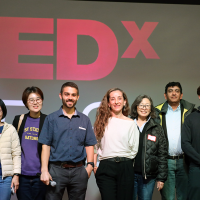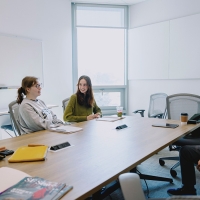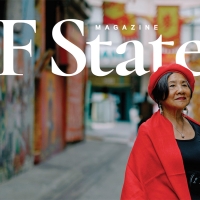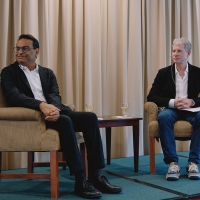SF State students write Wikipedia bios for unsung heroes of STEM

Humanities class helps fill in equity gaps among STEM professionals from underrepresented groups
Wikipedia is among the most visited websites in the world, with information on over 6 million topics. But much is missing, particularly in diversity. Through a partnership with the user-moderated online encyclopedia, students at San Francisco State University recently wrote original biographies for notable professionals in Science, Technology, Engineering and Mathematics (STEM) from underrepresented groups.
Scientists from traditionally underrepresented groups comprise a small minority on Wikipedia. According to Wikipedia, only about 8% of the site’s 275,000 biographies of scientists are women, with similar gaps across race and ethnicity.
With support from the Broadcom Foundation, the Wikipedia Education group selected the San Francisco State Humanities class “History of Science from the Scientific Revolution,” taught by Associate Professor David M. Peña-Guzmán from the Department of Humanities and Comparative World Literature, as one of its partners this past summer. Wikipedia Education is a nonprofit organization that serves as the bridge between academia and Wikipedia throughout the U.S. and Canada.
Nine of the biographies compiled by SF State students are live on Wikipedia. The students’ writing brings visibility to living professionals whose legacies have yet to be completed. They include chemical engineer Miguel Modestino, sustainable industrial engineer Enrique Lomnitz and Procter & Gamble executive and microbiologist Adrian Land.
Maxwell Stephen Williams, a History graduate student who took the class, helped contribute the bio on Aaron Streets, a UC Berkeley bioengineering professor. Williams says the class taught him different ways to utilize Wikipedia in academic research.
“It’s somewhat frowned upon to use Wikipedia as a source. But what’s not frowned upon, I found, was the sources that the people used for the Wikipedia article,” Williams said. “I don’t know if you should cite Wikipedia for a research paper, but it offers a general baseline. It gives you scholarly sources to further your own research.”
Peña-Guzmán applied for the class to participate in the Wikipedia Student Program because it aligned with the themes he wanted to impart to students about the complex relationship between science and the histories of patriarchy, colonialism, classism and social bias. Writing the biographies of scientists of color who have made an impact in a scientific or technological domain was the class’ culminating project.
“From the very beginning of the class, I built in questions about the politics of science,” he said. “Filling Wikipedia’s race gap through these biographies gave my students a very real, if minor, way of making a difference.”
Peña-Guzmán will discuss his students’ projects on Wednesday, Dec. 13, at “Closing the gap for Black and Hispanic STEM professionals on Wikipedia,” a free virtual seminar presented by Wikipedia Education.
The Wikipedia Student Program aims to make the broadly referenced site more inclusive and diverse. Since 2010, students from over 800 universities in the U.S. and Canada have worked on over 135,000 articles.
“Evidence suggests that Wikipedia can influence trials in courts of law and significantly shape the world of science,” says Wikipedia Education Equity Outreach Coordinator Andrés Vera, citing two research papers led by a Massachusetts Institute of Technology faculty member. “Teaching with Wikipedia can help spread awareness about any topic to a wide audience.”
Learn more about the Department of Humanities and Comparative World Literature.
Tags



